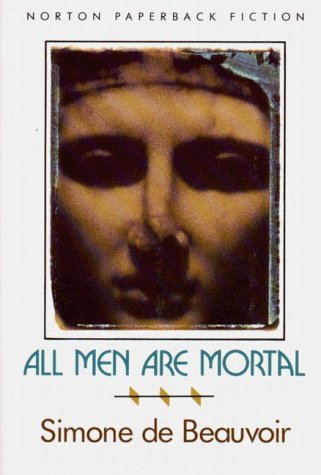
The Woman Destroyed
Book Description
What happens when the very foundation of a woman's identity crumbles beneath her? In "The Woman Destroyed," Simone de Beauvoir dives into the tumultuous lives of three women grappling with fading desire, betrayal, and the relentless passage of time. Each character's world is upended as they confront the relentless pressures of societal expectations and personal despair. Tensions rise as love, loss, and the search for self collide in heartbreaking decisions. Will they find redemption, or will the weight of their choices shatter them completely? Prepare for a gripping exploration of the human spirit—can they rise from the ashes of their own destructions?
Quick Book Summary
"The Woman Destroyed" by Simone de Beauvoir is a collection of three poignant novellas that delve deep into the emotional and existential crises faced by women in mid-twentieth-century France. Through the lives of Monique, Hélène, and Anne, de Beauvoir explores the unraveling of self when love, security, and purpose crumble under the weight of betrayal, aging, and societal expectations. Each protagonist battles isolation and heartbreak as they confront the limits of marriage, motherhood, and personal dreams. De Beauvoir's incisive prose exposes the nuanced realities of female identity, exploring both the internal forces and external pressures that lead these women to question their worth, their relationships, and ultimately, their own sense of being.
Summary of Key Ideas
Table of Contents
Search for Identity Beyond Traditional Roles
Simone de Beauvoir crafts three distinct female perspectives in "The Woman Destroyed," each representing a struggle with identity and purpose amid changing personal circumstances. The first novella reveals a woman forced into independence after her husband’s infidelity, highlighting the jarring loss felt when identity is anchored to marriage and family. The protagonists' sense of self begins to erode as they confront their dependence on roles imposed by others.
Impact of Betrayal and Alienation
Betrayal by lovers, friends, or the passage of time features heavily, dismantling the stability these women once felt. The arrival of loneliness, emotional estrangement, and deception pushes each towards an emotional brink. Drawing from existentialist philosophy, de Beauvoir illustrates how external betrayals often intensify internal doubts, compounding each woman’s isolation and self-doubt.
Confronting Aging and Mortality
Aging and mortality become unavoidable as the protagonists grapple with shifting beauty, waning health, and the dwindling responsibilities of motherhood and partnership. Their fears about becoming obsolete or invisible are heightened by the gradual erosion of youth and relevance. De Beauvoir uses these moments to underscore the anxiety and grief that come with transitioning into new phases of life, challenging the notion that fulfillment is tethered to conventional roles.
Societal Expectations and Female Autonomy
Society’s rigid expectations about womanhood—devoted wife, self-sacrificing mother, gracious aging partner—serve as invisible chains. These pressures stifle autonomy and foster dependency, ultimately leading to frustration and resignation. De Beauvoir’s heroines struggle to assert independence, but often find themselves constrained and criticized, revealing the difficulty of rewriting one’s narrative within a judgmental social framework.
Descent into Despair and Possibility of Redemption
Despite the pervasive themes of despair, de Beauvoir leaves subtle space for reflection and transformation. The interior monologues and moments of self-awareness allow these women to question prior assumptions and re-imagine their futures. While the trajectories are often tragic, the stories invite readers to consider the possibilities of resilience, redemption, and the enduring quest for authentic selfhood—even in the aftermath of personal destruction.
Download This Summary
Get a free PDF of this summary instantly — no email required.





